
THE OFFICIAL WEBSITE OF THE HAMMER’S SLAMMERS
THE CRUCIBLE RULES SYSTEM HANDBOOK



















GO BACK TO PAGE 3

Page 4
GO FORWARD TO PAGE 5

John Treadaway - December 2018
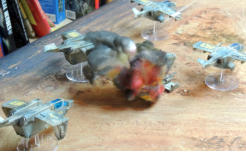
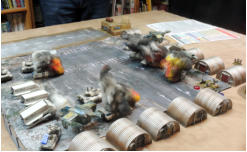
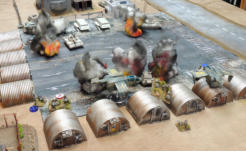
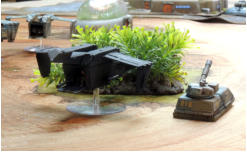
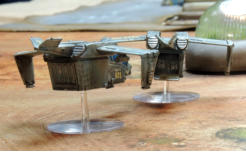
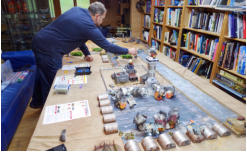
Operation Night Crow 2: All or Nothing
Click thumbnail to enlarge
All photos by Tony Francis & John Treadaway
MECHANISMS/part 2
So what was the trick I’d missed?
Exploiting the Leadership point system.
As one obvious example – in the first turn the
force to be activated might use just a single d6
dice roll. This would still allow firing from a static
position: in the Crucible, actual firing requires
no Leadership instruction – so no spending of
LPs – but shouting orders to fire ‘faster’ or
‘better’ requires leadership points to be spent.
Additionally, a few LPs bowled might allow a
very limited ability to move a few things into a
better firing position (or to take cover!).
In the second turn perhaps there might be (for
example) 2d6 of LPs bowled but with no
leadership bonus (just he men trying to get
active: the officer’s still in bed, no doubt!) and
this allows a little more flexibility.
In a third turn, a Sergeant might be enabled
(the officer might well be still in bed but the
sarge is up and shouting!) and this will add their
points to the 2D6 roll. A veteran Sarge at +2
points: not much but better than nothing when
you get a poor dice roll (and at least a
guarantee).
If they had a paid for Insurance Sergeant
(page 108 of the main rules) then that’s as good
as an officer.
In the fourth turn the actual officer
commanding the unit should be available. So
this would lead to a gradual enabling of units
rather than a ‘cliff edge’ (which is such a popular
term nowadays...) dice roll.
I think that this would have definately made for a
better and more progressive rolling start to the
game...